
The Best Daffodil Bulbs
Dare to go daffodil! From classic to quirky, daffodils are a fail-safe way to cheer up any garden. Order bulbs early for the best selection, plant in the fall and enjoy the flowers for many springs to come. To get you started, here are some of our favorite daffodil bulbs. You may be surprised how many heights, colors, and shapes that daffodils come in.
Check out daffodil facts you need to know.
You may also be surprised by how many different names these spring beauties go by: daffodil (of course), narcissus, and jonquil. Daffodil is the common name given to the plants by English-speaking people. Narcissus is the group’s botanical name, which many gardeners now use as its common name, too. And jonquils are a specific type of narcissus (Narcissus jonquilla), including popular varieties such as Baby Moon, Beautiful Eyes, Lemon Sailboat, Yellow River, Sherborne and Martinette. Jonquils usually have one to three small fragrant flowers per stem with more cylindrical pointed leaves.
Make sure to plant your daffodil bulbs before the first frost of the season, preferably in early autumn. Best advice for how to plant spring bulbs? Plant twice as deep as the bulb is tall. You should also pick a daffodil bulb that will grow well in your plant zone. (If you’re not sure where or what your plant zone is, check out our handy guide.
Psst—did you know the daffodil is the March birth flower?
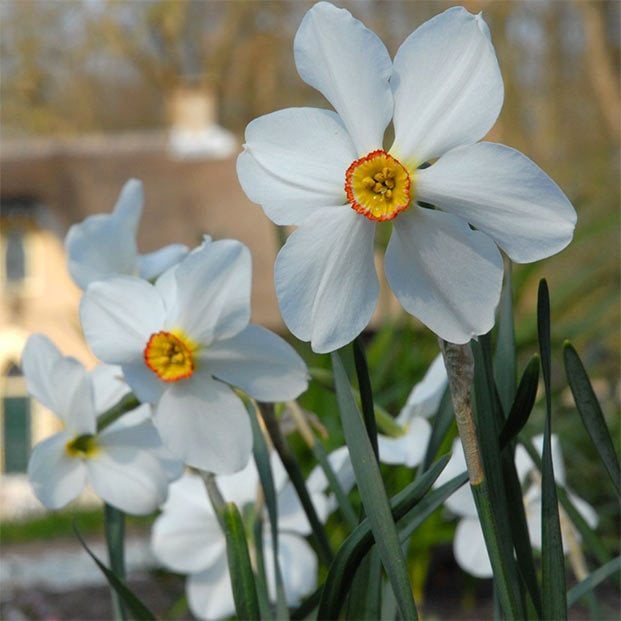
Actaea
Zones 3 to 8
This member of the poeticus group stands out in the garden thanks to its distinctive look: red-rimmed short trumpets skirted by large white petals. It has a fantastic fragrance, multiplies without a fuss and makes a great cut flower.
Why we love it: Actaea is an heirloom that keeps spring going a little longer because it blooms later in the season.
Check out the top 10 showstopping tulip bulbs to plant for spring color.
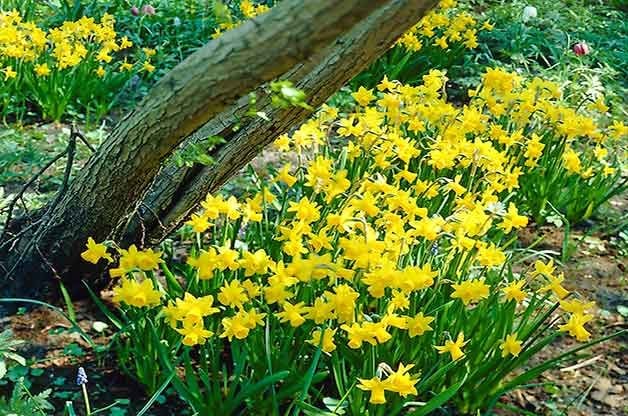
Tête-à-Tête
Zones 4 to 9
A top 10 list wouldn’t be complete without the super popular Tête-à-Tête miniature daffodil. Although it stands only 5 to 8 inches tall, its buttery yellow flowers make this spring bloom noticeable even from a distance. Force them indoors, grow them in containers or tuck them into perennial plantings for an extra dash of color.
Why we love it: The early blossoms are a welcome sign that spring has arrived at last.

Cool Flame
Zones 3 to 8
Add something different to your early or midspring garden with this charming flower. This large-cupped variety features snow-white petals and a bright coral trumpet.
Why we love it: Cool Flame may look delicate, but this variety holds its own among other daffodils and seasonal flowers such as allium.

Cheerfulness
Zones 3 to 9
Cheerfulness is just one of many varieties that differ greatly from traditional yellow daffodils. The double flowers are fragrant and appear in late spring.
Why we love it: Its heat tolerance makes it a smart choice for gardeners in warmer regions. Like all daffodil bulbs, it’s resistant to hungry deer and rabbits.

Golden Bells
Zones 3 to 8
Look closely at how this plant’s trumpets turn downward and you’ll see how it got its name. (The botanical name is Narcissus bulbocodium.) Also known as the hoop skirt or hoop petticoats daffodil, Golden Bells are happiest in full sun or part shade and in average and well-drained soils.
Why we love it: These 6- to 8-inch tall daffodils are right at home in rock gardens, troughs or small-scale plantings.
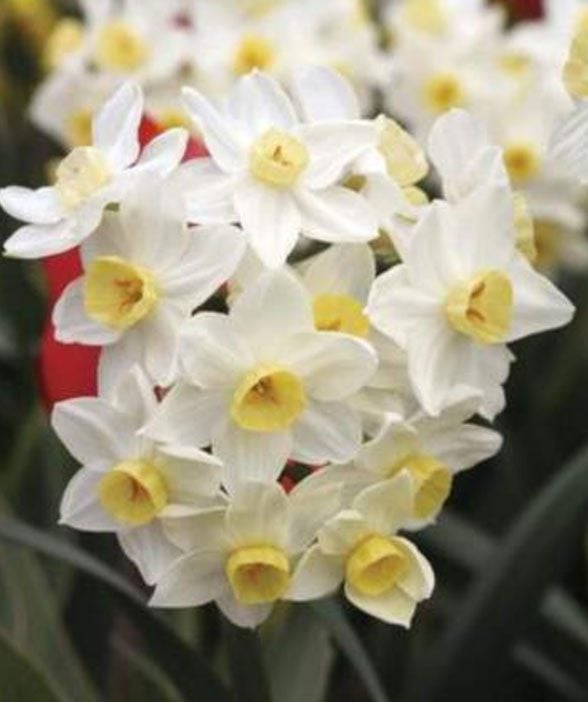
Avalanche
Zones 6 to 9
These midsized daffodils are longtime favorites in southern gardens. Like paperwhites, they grow in sweetly fragrant clusters of 10 to 20 little white and yellow blooms. Plant them in combination with colorful tulips or pansies to really show them off.
Why we love it: Thomas Jefferson was a fan! But he probably knew the Avalanche daffodil bulbs growing at Monticello by the name Seventeen Sisters. They can be grown indoors or, where climate allows, outdoors.

Pipit
Zones 3 to 8
They may top out at 14 inches tall, but don’t overlook Pipit. The mini, star-shaped blooms are golden with white centers, fading to creamy white. They are easy to grow and will naturalize well in your yard.
Why we love it: These fragrant daffodils are wonderful cut flowers.
Check out the 4 types of flower bulbs that gardeners should grow.
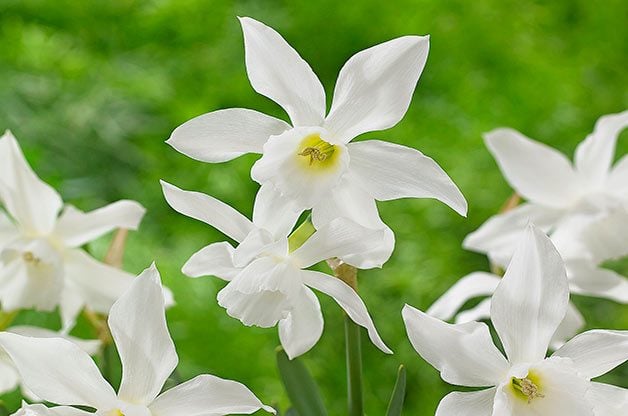
Thalia
Zones 3 to 9
Brighten up your moon garden with this midspring bloom. The narrow petals create the perfect backdrop for outward-facing trumpets, and it’s a snap for new gardeners to grow, especially in the South. This fragrant heirloom has a history dating to 1916.
Why we love it: Often called the whitest of the white daffodils, Thalia produces up to five pure white flowers per stem.
Check out eight pretty pink daffodil varieties to add to your garden.
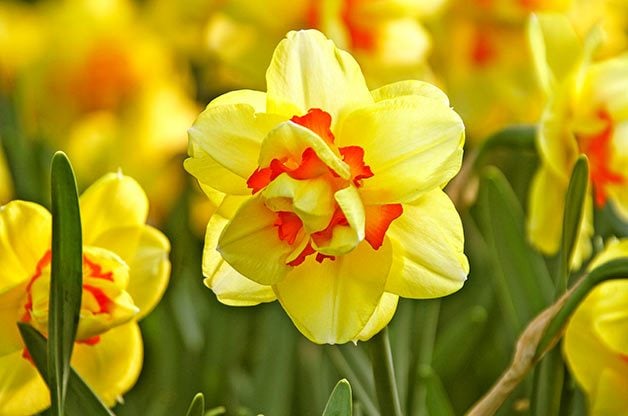
Tahiti
Zones 3 to 8
Bring out the tropical side of your landscape with this long-lasting, heat-resistant daffodil. Tahiti’s red-orange ruffles accent sunny blooms, making it a standout in the garden.
Why we love it: This striking charmer is one of the most sturdy and reliable double-flowering daffodils you’ll find.

Dutch Master
Zones 3 to 9
Traditionalists love Dutch Master, a classic golden daffodil. For an earlier bloomer, check out Unsurpassable, a trumpet variety that performs well in both northern and southern landscapes.
Why we love it: You can’t go wrong with this daffodil standby. Its bold color and large, sturdy blooms make it a wise choice for mass plantings. Check out more of the best classic yellow flowers to grow.
The Beauty of a Hummingbird Feather

When the sun hits it just right, a male ruby-throated hummingbird’s throat is a beautiful iridescent red. His vibrant green head glows, too! And, of course, ruby-throats aren’t the only hummingbirds with pretty feathers. Learn about the science that makes a hummingbird feather look so colorful and vibrant.
Discover more jaw-dropping facts about hummingbirds.

John Schewy, author of The Hummingbird Handbook, writes, “Hummers vary tremendously in the color and arrangement of their iridescent parts. Even among the handful of hummingbird species that are widespread in the United States, the array of colors is impressive. The male Allen’s and rufous hummers have blazing red-orange throats. The beautiful male Anna’s hummer has an incredible iridescent magenta throat, face and crown. And the closely related Costa’s hummingbird, whose neck feathers taper into long mustache-like points on each side, has a head wrapped in royal purple.”
Check out 50 stunning hummingbird pictures you need to see.
Hummingbird Feather Colors

Birds & Blooms reader Cheryl Curtiss asks, “I read that hummingbird feathers are not the bright colors we see. Can you explain this?”
Birding experts Kenn and Kimberly Kaufman explain. “It’s true. When we look at an Anna’s or ruby-throated hummingbird, for example, we’re not really seeing green pigment on their back feathers or red pigment on their throat feathers. Instead, those are structural colors. The feather itself is just dull and dark, but it’s covered with transparent layers of particular shapes that operate like a prism. They bend the light and reflect back only certain colors. This is why the colors can seem to change, too. Those red throat feathers may look orange, gold or even green, depending on the angle of the light.”
Birds & Blooms reader Steven Hogan asks, “Why do ruby-throated hummingbird feathers appear black sometimes?”
Kenn and Kimberly Kaufman say, “The beautiful iridescent colors of some hummingbird feathers have a surprising source. The feather itself may be a dull blackish color, but it’s covered with a thin layer of clear cells that are structured to reflect light only in certain ways, as a prism does. Light striking the feather from just the right angle reflects back brilliant red, violet or green, depending on the species. The color can shift as the angle changes, which is why a ruby-throated’s neck sometimes may look gold or greenish. But without direct lighting, those feathers simply look black.
Psst—Hummingbirds can see even MORE colors than humans, according to researchers. But can hummingbirds walk?
Hummingbird Gorget

What are the colorful patches on their necks? John Schewy writes, “With just a turn of the head, a hummingbird explodes in iridescent radiance. Its gorget (the patch of colorful feathers covering its throat) instantly blazes in shades that span the color spectrum, depending on the species. These dazzling colors come from the feather structure rather than pigmentation. Each iridescent hummingbird feather has tiny spikes that are densely packed with many layers of microscopic structures filled with air bubbles.”
These structures reflect light, says Bob Sundstrom, a science advisor for BirdNote, “creating color in the manner of sun glinting off an oily film on water.”
Next, discover the top 15 colorful hummingbird flowers you should grow.
Garden Health Benefits for Kids

Develop Healthy Eating Habits
Kids might turn up their noses at store-bought produce, but eating homegrown veggies is different, and you’ll immediately see the benefits of gardening. Help picky eaters by planting vegetables, and watch as they devour the harvest.
Nurture Smart Students
Gardening feeds minds as well as bodies. Each time you teach children about gardening, they get an education in math, science and nutrition.
Grow Responsible, Self Confident Kids
When kids see their garden filled with flowers or veggies, they gain a sense of pride knowing they had a hand in it. They also develop patience and learn to respect the earth.
Check out the top 10 easy plants for kids to grow.
Reduce Childhood Obesity
Keep kids active by introducing them to the fun and physical side of gardening. Show them that tending a garden can be rewarding for the beautiful flowers and tasty vegetables, and for the exercise and outdoor fun.
Broaden Their Horizons
Stuck on lunch foods? Can’t get your kids to help garden? Grow a few unique vegetables or flowers to get kids excited about gardening. They might eat that purple carrot because it’s a purple carrot!
Healthy After School Activities
Instead of rushing home to video games and TV, your kids can grab gardening gear after school, go on a frog hunt or count butterflies out back.
Combat ADHD
Getting outdoors is beneficial for kids with attention deficit hyperactivity disorder (ADHD). It helps calm them so they can concentrate more easily. According to the National Wildlife Federation, exposing kids to natural settings may be widely effective in reducing the symptoms of ADHD.
Aid Kids With Learning Disabilities
Studies show that children with learning disabilities increased their nonverbal skills and formed positive relationships with others when they tended a garden.
Psst—here’s how to get kids excited about birding.
Garden Health Benefits for Adults

Boost Your Mood
Ever wonder why gardeners are so chipper and optimistic? Spending time outside is one of the major benefits of gardening, and it can do wonders for your mood. It’s great for reducing stress and tension, and helping you relax. (Going birding is good for your mental health, too!)
Eat the Healthiest Foods Now
Growing vegetables means you’ll have the most nutritious veggies at your fingertips for the whole growing season. Even longer, if you find time for canning or freezing!
These are the best indoor plants for mental health, according to experts.
A Fun Way to Stay Fit

Forty-five minutes of gardening burns as many calories as a 30-minute aerobic activity. Weeding, digging and planting can burn as many as 350 calories per hour. And it doesn’t feel like work. It’s fun exercise that gets you outdoors listening to the birds!
Improve Your Sleep
Get a better good night’s rest by eating a diet rich in vegetables and adding light exercise and fresh air. If you still have trouble getting your zzz’s, plant lavender to promote relaxation.
Follow this month-by-month guide to growing healthy vegetables
Power Foods Nourish People
Many foods low in calories but high in heart-disease-fighting nutrients—so-called “power foods”—are those we can grow ourselves. Some to try are asparagus, broccoli, avocado, bell peppers, carrots, leafy greens, tomatoes and squash.
Try these top garden trends of 2022.
Garden Health Benefits for the ‘Young at Heart’

Improve Mobility, Strength and Endurance
Low-impact exercises like digging, weeding and planting strengthen muscles. They are perfect for those who can’t participate in vigorous activity. Also, gardening uses many muscle groups as well as promoting hand strength, joint flexibility and improved motor skills.
Learn how to create a windowsill herb garden.
Reduce Health Risks
Gardeners have a lower risk of osteoporosis and diabetes. Spending time in a natural setting can lower blood pressure and relieve muscle tension.
Keep Your Heart Healthy
Research has proved that light physical activity significantly lowers the risk of heart disease.
Follow these 5 tips for picking healthy plants at the nursery.
Get a Daily Dose of Vitamin D
Vitamin D, obtained through exposure to sunlight, protects against health problems like osteoporosis, heart disease, stroke and cancer.
Improve Your Financial Health
Store-bought vegetables don’t taste as good as homegrown, and they can be on the pricey side. Even growing just a few of your favorites can noticeably trim your grocery bill.
Save money and recycle with cardboard gardening.
Promote Social Interaction
Get to know your neighbors while you tend your garden. Gardening is a bond that many people share and can help you become more involved with other members of the community.
Stimulate Your Mind
Gardening helps those with Alzheimer’s and other kinds of dementia by providing a safe and stimulating environment. The sensory stimulation can also help evoke memories. For more health benefits of gardening, look into planting a healing garden.

It’s possible to reduce outdoor water use by 20 to 50 percent with a few easy changes. To keep your water bill low and plants looking perky, try these ways to conserve water from Birds & Blooms readers, the National Garden Bureau and Gardener’s Supply Company.
These are the best watering cans for every garden.
Improve the Soil and Use Compost to Conserve Water
Use organic matter, such as compost, chopped-up leaves or composted manure, to supplement your soil. These organic materials increase the water-holding capacity of soil. A good rule of thumb is to add 1 inch of compost per year.
These 15 water-wise plants thrive during dry spells.
In the planting hole, mix 1 part compost to 1 part soil. The compost will help the soil hold onto water for a longer length of time while not allowing it to become waterlogged. Compost also adds nutrients to the soil. Making your own compost is easy to do or you can purchase it at your local nursery. Here’s how to build a DIY compost bin.
Water Plants Deeply in the Early Morning
Give your plants a solid soak. While sprinklers get the job done, a soaker hose is even better. It applies the water directly to the soil by the roots, so up to 90 percent is actually available to plants.
Believe it or not, the time of day can make a difference as a way to conserve water. By watering in the cooler period of morning, there is less evaporation occurring. Avoid watering in the afternoon, when much of the water can be lost to evaporation. It is also wise to avoid watering in the evening when the moisture can foster fungal diseases.
Just Add Mulch
Spread mulch. It prevents weeds from growing and soaking up all of the water you add to the planting area. A layer of mulch provides the most bang for your buck. Organic mulches are best. Grass clippings free of weedkillers, evergreen needles, shredded bark and fall leaves will adds nutrients to the soil over time.
Once you water plants, moisture begins to immediately evaporate from the soil’s surface. By adding a layer of mulch, you help conserve water by limiting the amount lost to the atmosphere. In addition, mulching helps to keep the soil moist longer while keeping soil temperature cooler in summer and warmer in winter.
Psst—If you see white stuff on your mulch, this is what it means.
Save Rainwater
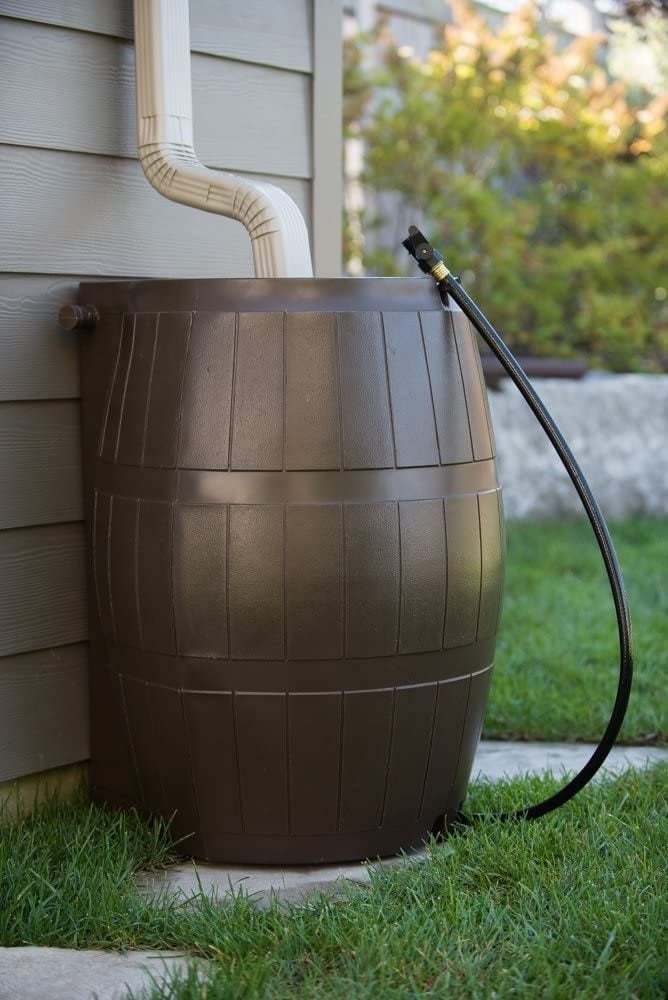
When rain does fall, it is important to harvest and direct it toward your garden instead of allowing it to runoff. Be extra frugal and capture all of the free water you can. Place rain barrels or a cistern at your downspouts. A 1,000-square-foot roof collects about 625 gallons of water from just 1 inch of rain.
You can also conserve and collect rainwater by creating rain gardens.
Group Plants with Similar Watering Requirements Together
Know the characteristics of your planting site, such as the amount of sun and shade it receives, soil type and wind conditions. Make a plan to group plants with similar needs, like these drought-tolerant plants.
Another drought tolerant garden tip: place higher water use plants toward the house where they can be watered easily. Group more drought tolerant plants on the the outer edges of the landscape.
Read Plant Tags and Use Native Plants When Possible
Wouldn’t it be nice to have a garden filled with plants that needed little to no supplemental water? Some plants get all the water they need from rain, so once established, they require less attention. If you’re looking for perennials suited for drought conditions, your best bet is usually native plants that are adapted to your climate and soil type.
Native plants are specially adapted to survive on natural rainfall amounts. In times of drought, they may need some supplemental water, but not as much as those that are not adapted to your local climate. Another bonus is that native plants are generally more pest resistant, need little to no fertilizer and are lower-maintenance than those that aren’t native. If you decide to plant some non-natives in your landscape, be sure that they are well-adapted to your climate without needing excess amounts of water.
Plant native trees that attract birds.
Remove the Competition
Keep up with garden chores. Healthy plants mean less work! When you stay on top of tasks such as weeding, thinning and pruning, you add to the health of your plants and, in turn, need to water less frequently.
Allow Grass to Grow Longer
By letting your grass grow to a height of 3 inches, it will shade the roots. This helps conserve water by decreasing the amount of evaporation. In addition, a higher mowing height will also help keep weeds from growing.
Decrease the Amount of Grass in Your Landscape
A lawn uses a large amount of water—an average of 55 inches a year. Beds filled with perennials will use much less water and provide a welcome spot of color in the landscape. If you opt to take out part of, or even your entire lawn, there are countless ways to create a beautiful garden that needs little to no supplemental water.
How often should gardeners water plants in winter?
Use Porous Landscaping Materials Instead of Concrete
Avoid concrete if you want to conserve water. Rain water can seep through porous materials, such as gravel or sand-set stepping stones, thereby watering nearby plants.
Follow these tips for watering container gardens.
Readers Share Ways to Conserve Water in the Garden
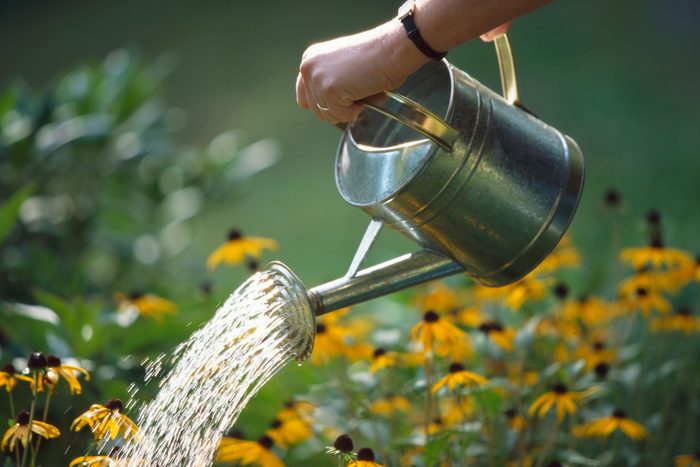
Birds & Blooms readers pass on their inventive ways of keeping plants happy without turning the spigot.
“I haven’t hooked up my garden hose for years. Instead, I catch excess water with a bucket in my shower, capture condensation from my air conditioner and save water from when I wash produce,” Lois Brumfield says.
“Recycled water from a dehumidifier helps me water my plants,” Nikki Conell says.
“When I fill the kiddie pool for my grandchildren, I don’t dump it out after. Instead, I fill all my watering cans and buckets with the leftover water,” Kathleen Norton says.
“I have three rain barrels that I use all spring and summer to water my ornamental garden plants, to fill the bird baths and fountains, and sometimes even to wash my hair!” Anita Allen says.
“I water each plant individually and deeply instead of mass drenching my gardens to save water,” Charlotte Estabrook says.
Use Drought-Tolerant Plants
Watering restrictions are a reality in many areas, and it makes sense to reduce watering chores whenever possible. Choose plants, trees and shrubs that require less water to thrive. There are many beautiful options that will work in a variety of soils and climates.
The key is to carefully match the plant to its site and to water it carefully for the first year or two. Once it establishes a good root system, it will mature with minimal watering.
Replace Some of Your Turf With Ground Covers
A lot of folks love their lawns, but frankly a good-looking lawn requires a lot of care. If you replace some of your grass with an appropriate ground cover plant, you’ll slash your chore time without sacrificing a lovely yard.
Consider replacing the turf in problem spots such as shady, hot or rocky areas with a ground cover that thrives under those conditions. Check with your local extension service for a list of appropriate plants, such as ground cover succulents.
Select Carefree Shrubs and Trees
Plant low maintenance shrubs and trees that won’t require a lot of your attention as they grow. There are many new plants specifically bred for their smaller stature as well as disease and pest resistance. Dwarf conifers, smaller shrubs and yard trees that reach 10 to 15 feet at maturity mean reduced pruning chores and less chance that you’ll need to remove them when they outgrow their sites or become diseased.
A dwarf globe spruce, upright juniper, barberry and smaller blooming ninebark (choose Seward “Summer Wine” or “Little Devil”) play nicely together each year with minimal pruning.
Hardscape with Permeable Materials

Inexpensive patio pavers set in a grid and surrounded by trap rock make an elegant, simple and environmentally friendly courtyard.
Patios, walkways, courtyards and other hardscape elements add a bit of magic to any yard and reduce landscaping chores. Choose materials and designs that allow rainwater to permeate the soil to irrigate plantings, minimize erosion and prevent runoff. These include organic mulches, gravel, stone and permeable pavers.
Mulch Heavily, Turn Soil Rarely and Plant Densely to Minimize Weeding
Keep weeding chores to a minimum by mulching heavily with compost and shredded bark. Plant things close together to shade out weeds, and avoid turning the soil, which exposes dormant weed seeds to sunlight. Instead, let the earthworms from your compost do the cultivating for you.
Minimize Labor-Intensive Plantings

People love roses, but most require a lot of water and fertilizer to look their best. That’s not to say you should give up everything you love, but choose your plantings carefully. If the majority of your landscape is relatively carefree, you’ll have more time to keep your finicky plants looking their best.
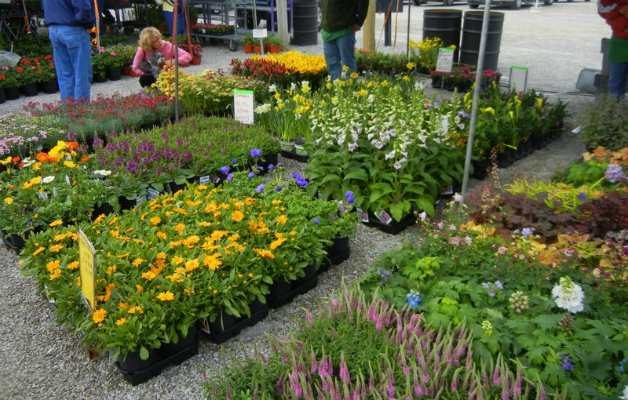
Spring and fall are the most popular months for adding new plants to the garden. When you visit your local nursery or garden center, can you tell the difference between healthy plants and those that may have potential problems? Today, let’s look at some helpful tips to help you pick a plant that is healthy while learning what signs to on the lookout for that could spell problems.
Here’s why gardening is good for your health.
Pick a Plant With Healthy Foliage
The leaves of a plant are often a good mirror of its health. Avoid plants whose leaves are brown or yellowing, which could be a sign of over or under watering as well as being placed in the wrong exposure.
Look carefully for pale or dark spots on the foliage, which could indicate disease that could spread to your existing plants at home. Check for webs or chewed leaves, which are signs of damaging insects. It’s better to be safe than sorry and avoid plants that show these signs of problems.
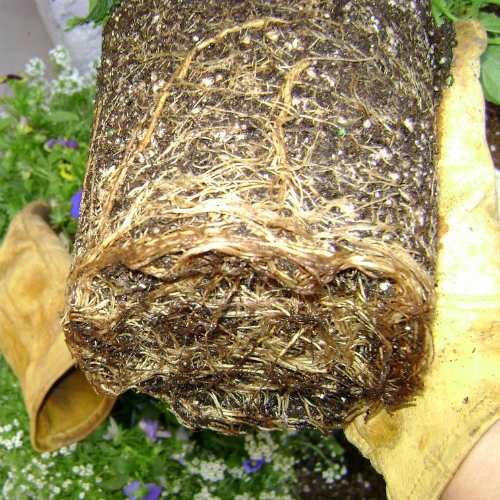
Avoid Plants That Have Been Sitting in the Nursery
Ideally, nurseries are meant to be temporary holding areas for plants until they are purchased. However, sometimes plants that aren’t bought quickly can sit for weeks, months or even longer in their containers. Why is this a problem? Even though plants may be sitting in their nursery container, their roots keep growing. Normally, most roots grow outward. But in a container they will start to grow around in a circle, which can lead to a root bound plant. This is a problem because the roots are severely hampered in their efforts to absorb water and nutrients, which leads to a sickly plant and ultimately death.
Sometimes, nurseries will transplant these plants into large containers to avoid root bound plants. But this is not always the case. So how can you tell if a plant has been in the same size container for too long?
While it’s not always possible to see a plants roots in the container, there are a few other signs to look for. Check for roots growing out of the drainage holes on the bottom of the container, which can also indicate a root bound plant. If there are any weeds growing in the container, that is also a sign that the plant has been in its container too long.
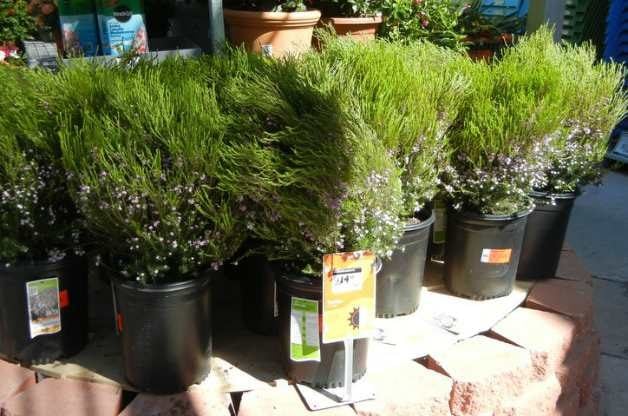
Pick Plants Growing in Smaller-Sized Containers
Admit it – when you visit the nursery, do you skip over those plants in small containers for the bigger ones? Believe it or not, bigger isn’t always better when it comes to plants. Often, it is better to go with the smaller-sized plant. The reason for this is that smaller plants are younger and have an easier time dealing with the shock associated with transplanting. In addition, they also grow more quickly than the same plant in a large size because the younger plant doesn’t have as much top growth (the part of the plant above ground). So its roots aren’t as stressed with supporting the top growth and can concentrate on growing roots, which is soon followed by new top growth.
In many cases, if you plant a plant in a 1-gallon size next to the same plant in a 5-gallon size, in one year’s time, the smaller plant often catches up in size to the bigger plant. This tip works best with plants that have a medium to fast growth rate. For plants that are slow growers, you may want to go with the larger sizes.
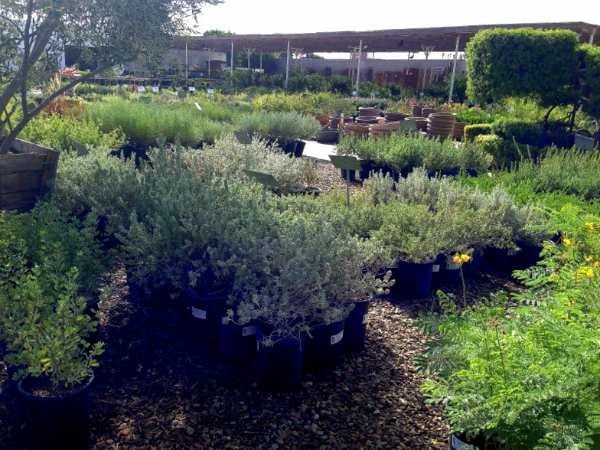
Purchase Plants From Local Growers When Possible
Imagine that you were a plant that was grown in an area with warm temperatures and were then transported far way to another climate with much colder temperatures. Would it take you a while to adapt? Of course it would. When taking plants from one type of environment into another, they need time to adjust and to gradually ‘harden off’. This is the process where plants are gradually introduced to the new environment, giving them time to adapt.
Another example of this is fairly common where I live in the desert Southwest. Many of the plants sold in nurseries come from California, which has milder summers. But when they are planted in our hot, dry conditions they struggle to survive. This happens even if it is a plant that normally does well in our climate. The problem is that it wasn’t adapted to our environment.
Buying plants from local growers prevents this problem from happening. The plants are already adapted to your local climate without having to be hardened off.
Another benefit of selecting plants grown from local growers is that your are supporting your local economy. You’ll also reduce resources such as gasoline used for transporting plants from far distances.
Read the Plant Label

Before buying a plant, take a moment to look at the label for important information that can save you buyer’s remorse later. Look to see how large it will grow. Make sure you have enough room for it to grow or you may be having to prune if often. Check what exposure it grows best in. You’ll save yourself a lot of frustration from trying to coddle a struggling plant that was simply planted in the wrong place.
Labels may include other helpful information. Find out how much water it needs, what type of wildlife it attracts (bees, butterflies, hummingbirds) and the bloom color.
The next time you visit the nursery, come armed with these gardening basics. Then you’ll come home with healthy plants that will thrive in your garden.

It’s such a joyful springtime sight: American robins hopping around in bright green grass, searching intently for worms and nesting material. Given the happiness these red-breasted birds bring, it’s no wonder birders want to attract them to stick around and raise their young. But will robins use a bird house? Is there even such thing as a robin bird house? Here’s what you should know.
Enjoy cheerful robin bird pictures to welcome spring.
Will Robins Use Bird Houses?

If you’ve put up bluebird houses, chickadee nest boxes or decorative bird houses in your yard, don’t expect a robin to move in. Unlike those birds, robins are not “cavity nesters,” meaning they don’t build nests in pre-existing holes in trees. As such, a bird house — which mimics that “hole-in-tree” environment — doesn’t appeal to them.
Birds & Blooms readers have reported seeing robins nesting on windowsills, ledges and even on woven baskets. Check out 9 proven tips to attract nesting birds.
We asked the experts—will a hummingbird use a bird house?
Robin Bird House Alternative

While robins won’t use a traditional bird house and a robin bird house isn’t a product you should buy, there are some birdhouse-like products available for them. Robins tend to build their nests on flat surfaces, and nesting shelves replicate that setting.
Nesting shelves are a lot like bird houses with the front panel removed. There’s a large gap so birds can fly directly into the house, as they would if they had nested on a natural flat surface. Many have a roof-like awning that hangs over the shelf, so the birds don’t get wet when it rains. After all, in the trees, birds are protected by leaves!
Psst—Do robins migrate and fly south in winter? Here’s how to attract robins to your yard year-round.
Where to Buy a Nesting Shelf for Robins
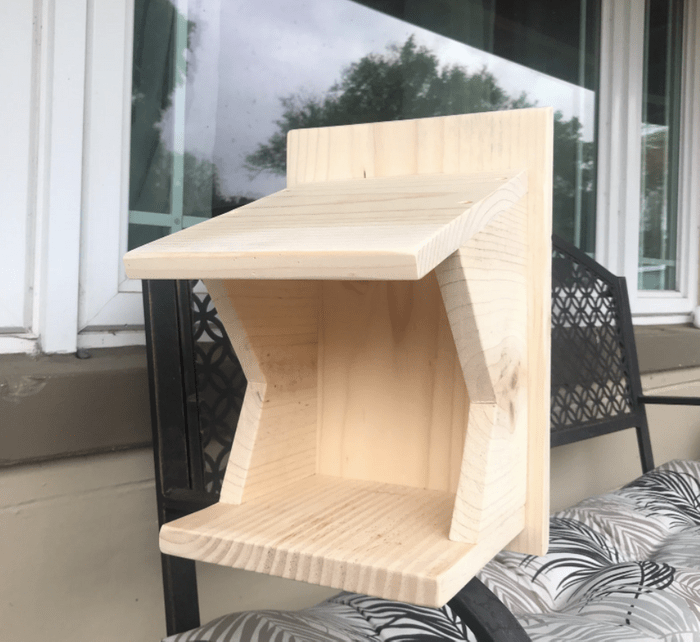
If you’re looking to purchase a nesting shelf, several options are available online (like this one from Etsy).
You can always make your own DIY nesting shelf, too. The Cornell Lab of Ornithology’s Project NestWatch has plans available to make a shelf out of wood. Barn swallows and Eastern phoebes may also use these shelves for nesting. If you’re looking to take a craftier approach, here’s how to make a nesting shelf out of a bucket.
Next, discover the differences between American and European robins. Plus, do robins mate for life?

Basil is one of the most popular culinary herbs around, thanks to its spicy-sweet leaves and the way it adds a flavorful zing to pastas, sandwiches and sauces. But this leafy herb can be tricky to grow. It needs plenty of sunshine, well-draining soil and regular harvesting in order to thrive. Follow these seven basil tips for garden success.
1. Grow What You Need
Before you fill your garden beds with basil, think about how you’re planning to use it. If you just want some fresh basil on hand when you need it, two to three plants should be enough. Home cooks who want to whip up flavorful pesto or dry leaves for winter pastas, sauces, soups and stews will need to grow at least six to eight plants.
2. Start With Seeds or Established Plants

More-experienced green thumbs may wish to grow basil from seed. Sow the seeds indoors in a sunny windowsill or under grow lights six to eight weeks before the last expected spring frost. Basil can also be purchased as seedlings from a local nursery and planted in garden beds and containers, or direct sow seeds after the last frost.
3. Give Basil Lots of Light
Basil needs plenty of sunshine for healthy growth. In northern regions, look for a location with at least eight to 10 hours of full sun. In southern areas where summer temperatures soar, basil can be planted in beds or containers that offer afternoon shade. Here’s how to create a windowsill herb garden.
4. Keep Basil Warm
A common mistake when growing basil is planting it outdoors too early. Be patient and keep seedlings indoors until the weather is reliably over 60 degrees. If an unexpected spring cold snap or frost threatens, protect plants with a floating row cover or old bedsheet.
5. Basil Watering Tips
Overwatering is the fastest way to kill basil. It appreciates regular moisture, but roots rot if they are sitting in water, so reach for the watering can only when the soil is dry. Regarding basil tips for containers, use a high-quality, well-draining potting soil to ensure good drainage.
6. Harvest Basil Often

Regular basil-harvesting encourages fresh growth. To harvest, snip leaves or stems as needed, clipping them back to stimulate growth. Pinch flower buds as they appear to prevent the plant switching from leaf to seed production.
7. Try Different Varieties of Basil
It’s fun to experiment with growing (and taste-testing) different basil varieties in your garden. Thai basil offers an intense licorice kick to salads and curries. Lemon basil has a bright citrus flavor that’s delicious in marinades and teas. Another favorite is cinnamon basil, which has fragrant leaves infused with the spicy scent of cinnamon.
3 Basil Favorites to Try This Year
Dolce Fresca is an All-America Selections award winner that produces compact, 15-inch-tall plants with dense growth and flavorful leaves. Perfect for pots or gardens, it makes wonderful pesto.
Pesto Perpetuo is an unusual basil with small white-and-green variegated leaves and a tall, narrow form. This plant doesn’t produce flowers but instead continues to pump out fresh foliage until the first frost.
Nufar is an outstanding cultivar of sweet basil with large, bright green leaves packed with classic flavor. The plants grow up to 2 feet tall and are resistant to Fusarium wilt, a common basil disease.
Robin Bird Meaning in Springtime

To many, seeing a robin is an early sign of spring. (Is that true? We break down the facts — and myths — behind the “first robin of spring.”) As a result, some people believe that the robin bird meaning is a promise of new beginnings and renewal, just like how plants begin to grow and bloom in springtime. Seeing a robin may encourage the observer to make positive changes in their life, let go of any grudges and follow their dreams.
Looking to see more American robins in your yard? Find out what robins eat and discover how to attract robins year-round.

“I was passing by a cemetery the other day, checking out the monuments, when I noticed something a little unusual. When I took a closer look, I saw that an American robin nest in the arms of an angel monument. What a perfect place! I stopped each week that nesting season to see how the mom and babies were doing,” Donita Morris says.
European robin vs American robin: find out how to tell the difference.
Other Meanings of Robin Bird Sightings

Another interesting interpretation is that a robin’s brightly colored yellow beak is a symbol of the power and impact that our words have. In that way, seeing a robin is a gentle reminder to take care with what you say and how you say it.
“I adore this capture of a wide-eyed robin (above) taken this past spring at one of my favorite spots in New Jersey, Deep Cut Gardens, where I go to reset my mind and be one with nature. It brought a smile to my face and reminded me of the sweetness and loveliness still in the world,” says Lauren Morris.

“After my mother’s passing, I brought home the bird bath I gave her for her birthday. Last summer, I captured this perfect picture of a robin (above) taking a bath. I love how it appears to look right at me as if saying ‘Hey, I’d like a little privacy please.’ I got the love of birds from my parents. It brings me great joy to capture wildlife in my backyard,” Amy Calvetti says.
If you see a cardinal, here’s what it means.
Robin Superstition
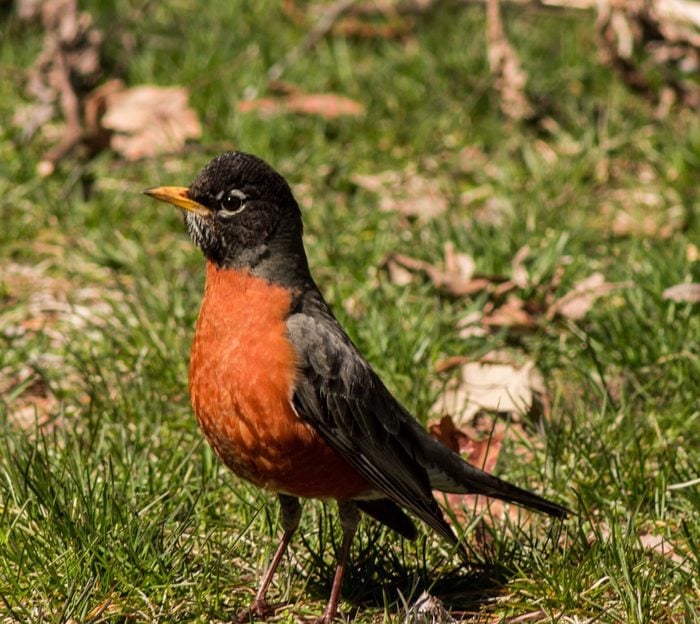
There’s an old Irish superstition about the first robin of spring, too. Supposedly, if you make a wish when you see the first robin of the new season, that wish will come true. You’ll have to make it quick! The superstition also states that the wish only comes true if you complete it before the bird flies away. Do hummingbird sightings and monarch butterfly sightings have special meaning?
“In Michigan, we wait with baited breath in late winter/early spring for our little robin friends to show up. They usher in a feeling up optimism and confidence that summer is just around the corner. As a member of the thrush family, the robin has some incredibly musical calls that I heard very clearly this year,” says Dorrie Milan.
Next, meet 7 types of birds that look like robins.

